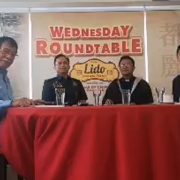Rice tariffication to impoverish Filipino farmers more, Congress warned
Research group IBON raised concern over the current move by the House of Representatives (HOR) to lift the quantitative restrictions (QR) on rice imports and instead apply a 35 percent tariff on unlimited rice importation.
This will practically decrease farm gate prices, said IBON, but not necessarily lower retail rice prices as government claims.
Rice prices have increased for six straight months in 2018 – by Php2.53 from Php37.83 to Php40.36 for regular milled rice and by Php1.61 from Php42.58 to Php44.19 for well milled rice.
Consequently, government called for additional importation ahead of the schedule for the minimum access volume (MAV), a commitment under the World Trade Organization (WTO), and for Congress to rush the rice tariffication bill to lower the price of rice and ensure support for farmers.
IBON however said that as it is, the prevailing farm gate price of Php21 does not provide sufficient income from the farmers’ average production cost of Php12 per kilo.
Computing the average yield of 80 cavans of palay from one hectare, which is equivalent to 4,000 kilos, the rice farmer earns only Php36,000 until the next cropping.
Each cropping commonly lasts for six months, which means that the farmer’s average monthly income of Php6,000 is 76 percent short of the estimated monthly family living wage (FLW) of Php25,454 for a family of five.
If higher importation will decrease farm gate prices, the already insufficient income of farmers will fall further, IBON said.
Retail prices, on the other hand, will not likely automatically go down with increased rice imports that supposedly stabilize supply.
The years of highest importation are also the years of highest price increases, IBON observed.
For instance, when rice retail prices increased by Php7.99 per kilo during the rice crisis in 2008, the country was already importing an average of 1.8 million metric tons (MMT) for three years, an unprecedented volume since 2000s.
When the country imported even more at a yearly average of 2.2 MMT from 2008-2010, retail prices continued to increase by an annual average of Php1.20 until 2016.
The farmers are themselves rice consumers, IBON said, and will be affected badly by lower income yet continuously increasing rice retail prices.
The group added that Congress may be misguided for placing hopes on unlimited rice importation for stabilizing supply and prices while the rice industry remains dominated by an alleged trading cartel that dictates rice prices. #







